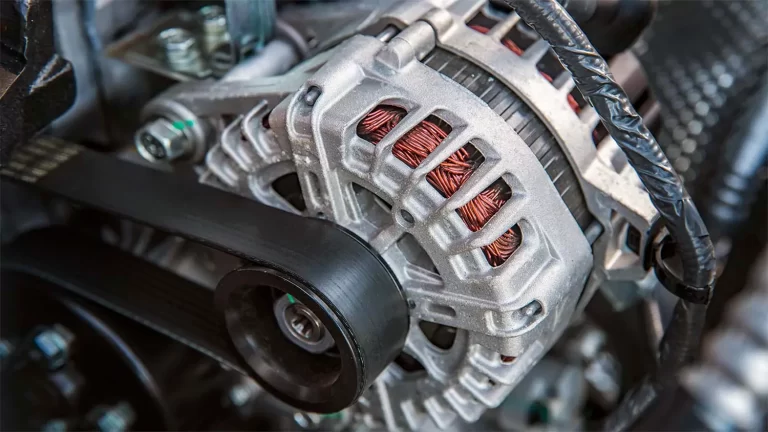
Symptoms of Car Alternator Failure and How to Fix It
The car alternator is one of the vital parts of the vehicle’s electrical system responsible for supplying the proper electrical current to charge the battery and power other electrical components. If the alternator fails, the car may not start, or if it does, it won’t stay running for long. In this article, we will introduce you to the symptoms of alternator failure and how to fix them.
The Role and Importance of the Alternator
The alternator converts the mechanical energy from the engine into electrical energy and generates the power needed to turn on the headlights, audio system, and other electrical devices in the car. Additionally, the alternator charges the car battery while driving, which is why it is called the heart of the vehicle’s electrical system.
If the alternator fails, the car battery will not be able to supply power properly, and the electrical equipment will malfunction.
Symptoms of Alternator Failure
-
Headlights Becoming Brighter or Dimmer
Voltage instability from a faulty alternator causes the headlights’ brightness to fluctuate, sometimes flickering or suddenly becoming dimmer or brighter. -
Reduced or Stopped Operation of Auxiliary Devices
When the alternator doesn’t supply sufficient power, electrical accessories such as heated seats, power windows, speedometer, and other devices may malfunction. -
Difficulty Starting or Frequent Stalling
Alternator failure leads to battery discharge, causing difficulty starting the engine or frequent stalling while driving. -
Smell of Burning Rubber or Wires
This odor often results from wear of the alternator drive belt or wiring issues and can indicate alternator damage. -
Warning Light (Check Engine or Battery) Turning On
The warning light signals electrical system issues, and alternator failure is a common cause. -
Unusual Noises Under the Hood
Growling or whining noises may occur due to a loose or worn alternator belt or bearing. -
Rapid Battery Drain
Without a working alternator, the battery won’t charge and will drain quickly.
Causes of Alternator Failure
-
Worn Brushes: Brushes wear out over time due to friction and lose effectiveness.
-
Water or Oil Ingress: Causes corrosion and reduces performance.
-
Wiring Issues: Damaged or broken wires prevent proper power transmission.
-
Loose Battery Terminals: Acid buildup or loose connections can disrupt charging.
-
Blown Fuses: Damaged fuses interrupt electrical flow.
-
Broken Pulley or Belt: Without mechanical input, the alternator cannot generate electricity.
-
High Temperature: Excess heat increases electrical resistance, decreasing alternator life.
-
Dust and Dirt Contamination: Dirt inside the alternator causes malfunction.
Dangers of Driving with a Faulty Alternator
-
Weak or Dead Battery: This can cause brake system failure, lighting issues, and other safety problems, potentially leading to accidents.
-
Electrical System Malfunction: Loss of control and impaired driving safety.
-
Fire Hazard: Excessive heat or electrical shorts may cause fire.
-
Engine Shutdown: Sudden engine failure at high speeds is extremely dangerous.
How Long Can You Drive with a Bad Alternator?
The duration depends on the battery’s condition, charge level, and electrical usage. However, it is highly recommended to repair or replace the alternator immediately to avoid serious problems.
Tips to Prevent Alternator Failure
-
Keep the alternator and wiring clean and properly installed.
-
Perform regular maintenance and promptly address any issues.
-
Minimize the use of electrical accessories when the engine is off.
-
Consult a specialist as soon as symptoms appear.
Conclusion
The alternator is a critical vehicle component, and its failure can cause serious issues. Recognizing the symptoms and maintaining the alternator properly with timely repairs can extend its life and ensure better vehicle performance.
